New York Post, January 3, 1925: “Vanderbilt Recalls Days When 30 Miles An Hour Was Speed” Part I
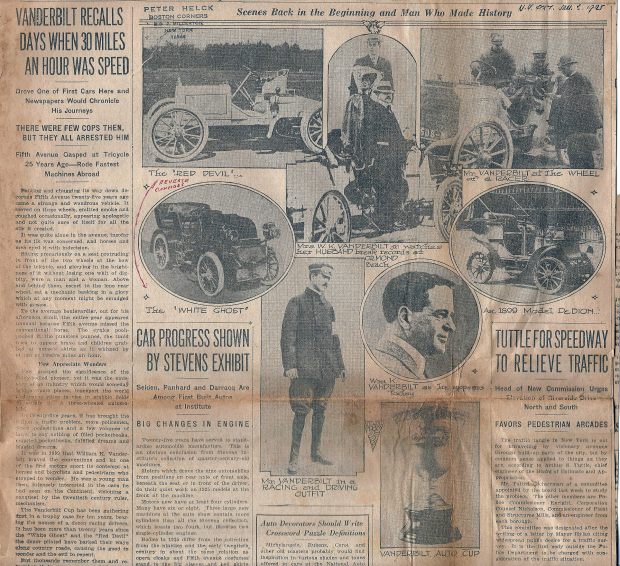
In 1925, the New York Post obtained a rare interview with William K. Vanderbilt, Jr. Thanks to a copy of the original newspaper found in the Helck Family Collection, the article provides insight on how Vanderbilt recalled his early vehicles and how New York viewed Willie K.
Enjoy,
Howard Kroplick
New York Post, January 3, 1925
VANDERBILT RECALLS DAYS WHEN 30 MILES AN HOUR WAS SPEED
Fifth Avenue Grasped at Tricycle 25 Years Ago- Rode Fastest Machines Abroad
Panting and chugging its way down decorous Fifth Avenue twenty-five years ago came a strange and wondrous vehicle. It moved on three wheels, emitted smoke and coughed occasionally, appearing apologetic and not quite sure of itself for all the stir it created.
It was quite alone in the avenue, insofar as its ilk was concerned, and horses and men eyed it with indecision.
Sitting precariously on a seat protruding in front of the two wheels at the bow of the tricycle, and glorying in the brightness of it without losing one whit of dignity, were a man and a woman. Above and behind them, escort to the lone rear wheel, sat a mechanic basking in a glory which at any moment might be smudged with grease.
Few grasped the significance of the shiny-bodied pioneer, yet it was the emissary of an industry which would someday bridge waste places, transport the world and cause cities to rise in stubble fields to satisfy it. A three-wheeled automobile.
In twenty-five years, it has brought the nation a traffic problem, more policemen, fewer pedestrians and a few volumes of laws, to say nothing of filled pocketbooks, emptied pocketbooks, fulfilled dreams and blasted dreams.
It was in 1899 that William K. Vanderbilt braved the conventions and let one of the first motors snort its contempt at horses and pedestrians who stopped to wonder. He was a young man then, intensely interested in the cars he had seen in the Continent, visioning a conquest by the twentieth century ruler mechanism.
The Vanderbilt Cup has been gathering dust in a trophy case for ten years, bearing the names of a dozen racing drivers. It has been more than twenty years since the “White Ghost” and the “Red Devil” the donor piloted have barked their ways along country roads, causing the good to wonder and the evil to repent.
But thousands remember them and remember their owner as one of the most colorful figures in the history of early automotive development.
1899 Mors
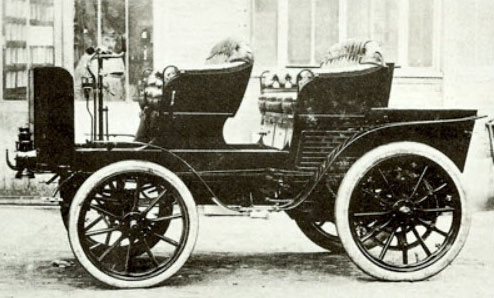
Although his curiosity was piqued, it was not until 1899 that Vanderbilt was able to invest in his own “folly.” Gasoline was rivaling steam as means of locomotion, and he purchased a Mors petrol model in England.
“It was a distinct disappointment” he declared. “I sold it within a few months. There was a belt drive behind the engine and the universal. This belt was shifted from one side of the roller to another by means of pulleys in lieu of the present gear shift. It was very temperamental.”
1899 6-HP Panhard
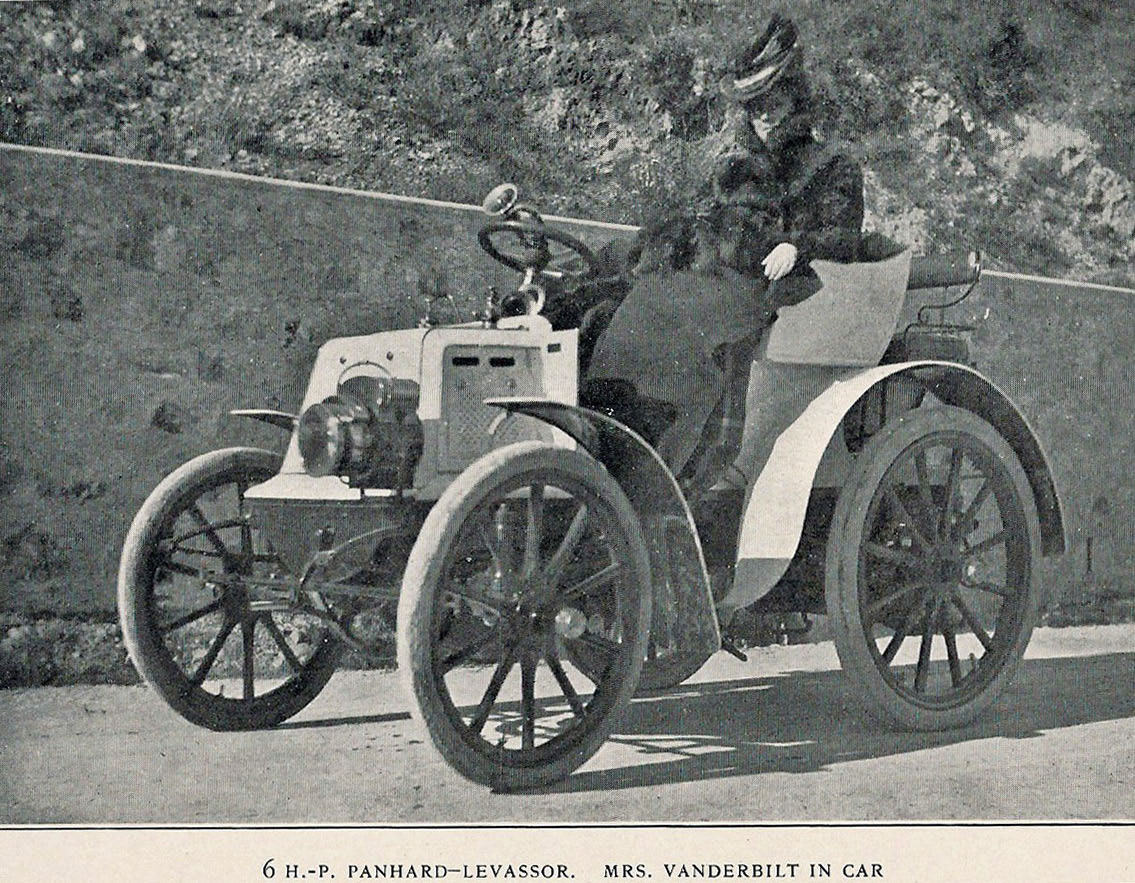
“My next machine, also purchased in 1899, was as a French car of six horse power, generated by two cylinders. The car had the orthodox four wheels, the rear ones larger than the front and about forty-eight inches in diameter. They were equipped with pneumatic tires.”
“We always carried mechanics with us in those days, but we were very fortunate with this car, having little trouble on the road. The car had a platinum wire ignition system, kept at white heat by Bunsen burners far from an auxiliary petrol system. When the gas came in contact with the hot wire, it exploded immediately.”
“This car went ripping along at the astonishing rate of twenty miles an hour, providing, of course, the wind was not blowing. This retarded progress to an alarming extent. Hills were easy.”
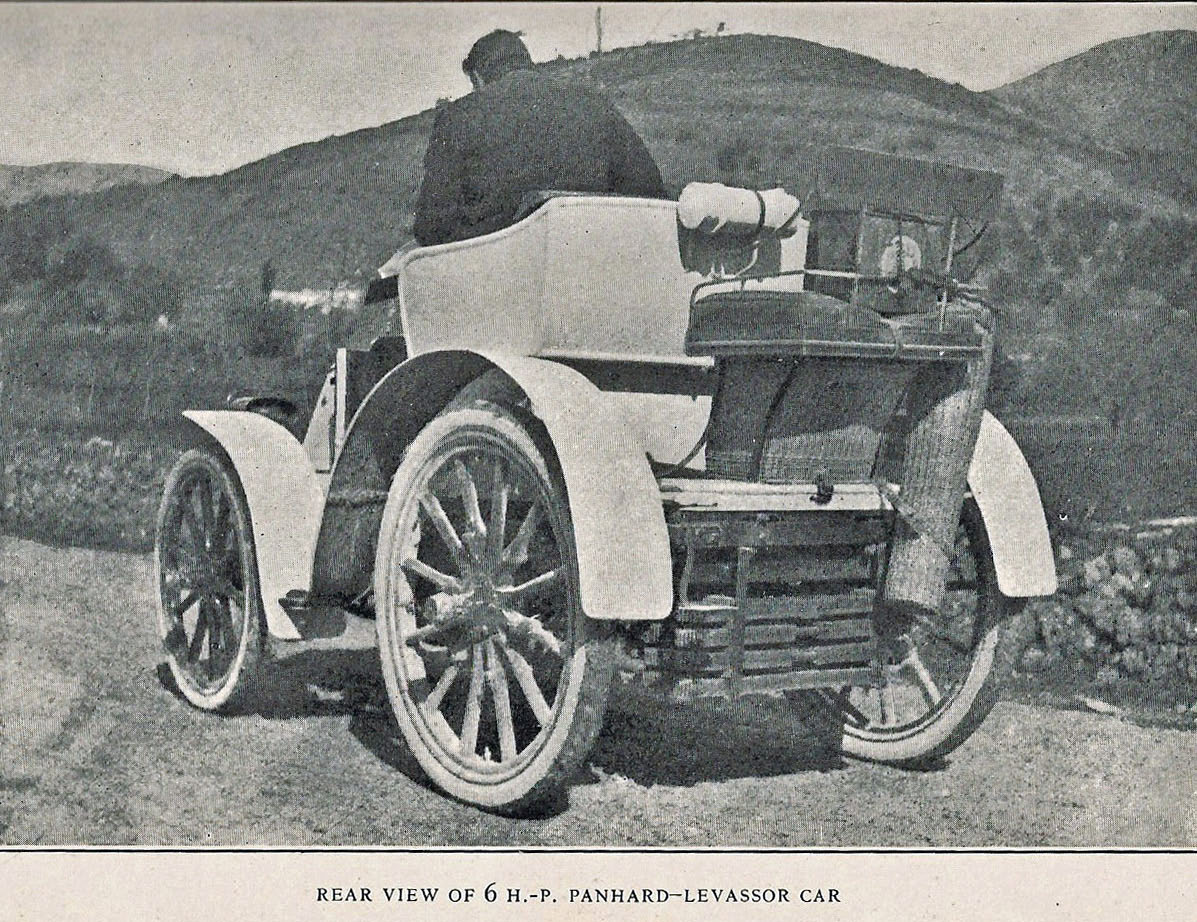
Accessories on the car included one large headlight of highly polished brass. The machine represented an investment of $5,000. (Note: The equivalent of $146,000 in 2016). The radiator was quite contrary, being perched on the back of the chassis. There were seats in the front for the driver and his companion, while high above was the mechanic.”
“I drove from Paris to Monte Carlo and Nice and then to Pau in astonishingly low time,” he continued. “From Paris to Nice, 1,043 kilometers (about 650 miles), in thirty-nine hours and six minutes, and from Nice to Pau, a distance of 353 kilometers (about 530 miles) in thirty-two hours and forty-five minutes.”
1899 DeDion Tricycle
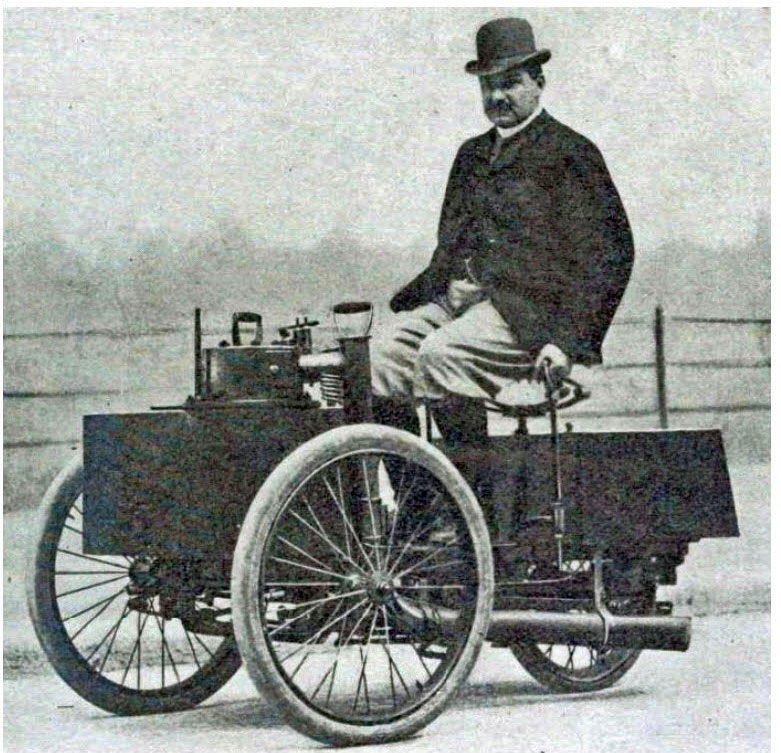
Later in 1899, he returned to America with the tricycle which so thrilled Fifth Avenue. With it, he often took long, reckless jaunts as far as Hempstead, L.I., crowds gathering in the streets and along the roads to see him pass. He was watched closely by the newspapers, and when he contemplated a journey the news was broadcast.
.
1899 Stanley Steamer
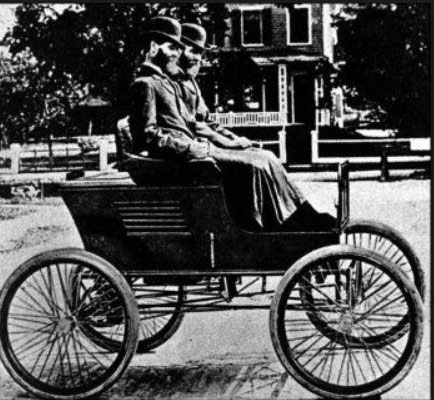
“Later I bought a Stanley steamer, which was good exercise but not much fun.”
“The boiler was more thirsty than a shipwrecked sailor and we were constantly on the go for water. Furthermore, the steam sometimes escaped, sending the curious behind shelter until the excitement had subsided.”
“The car had room for two in the front and was steered with a long rod. It looked more like a carriage than an automobile of any description.”

Comments
Great presentation Howard, didn’t have a clue of all the history behind the scenes. There’s so much history involved that is quickly forgotten. Can’t find a better place to recount history. Please keep this up.
From Dave F:
Howard, do not know where you get these fantastic, very interesting photos, but they are terrific…..keep up the good, interesting, informative, work that you do…..as Artie Johnson of the “Laugh In” tv show used to say….“VEDDY INTERESTING” Dave ......10-4
Fascinating to read from his perspective and times…..Thanks Howard !
Hello from Gerry Crosson of the Vanderbilt Museum. You might be interested to know that at the “Book Revue” bookstore in Huntington Village, just north of the intersections of Routes 25a and 110 is about 25 years worth of copies of the “Long Island Forum” magazine on the upper floor Clearance section. These date from around the 1950’s to the 1980’s and are on sale for $0.75 apiece. It would be a shame to see this set broken up. Any possibility the North Hempstead Historical Society could take a look and offer to buy the entire set for its archives? The set could be loaned to a local library if the Society has no room in it’s offices or museum. As you know, the “Long Island Forum” publication is a valuable resource for any scholar of Long Island history. The society could buy the set probably at a much reduced price if an offer to buy the entire set intact is made.
Thanks.